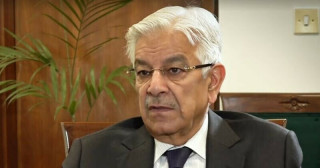Social Structure
The population of ancient Egypt was divided into groups or classes of people with different jobs and responsibilities to society. The social structure or hierarchy in ancient Egypt was based upon six levels. The social pyramid shown below depicts the levels of each social class in terms of power and importance.
The two top levels, the Pharaoh and Government Officials, were the most powerful and wealthy. At the bottom level was the slaves who served wealthier families. The peasants were were mostly farmers and construction workers. The peasants formed the largest social class in terms of population.

The Pharaoh
The Pharaoh was a god on earth and the ultimate authority in Egypt. It was his/her duty to make the law and maintain order in the Kingdom. The people expected the pharaoh to keep the gods happy so the Nile would flood and there would be a good harvest. S/he had to maintain the army to defend the country from outside threats and internal difficulties.
Government Officials
Government officials consisted of members of the royal family, nobles and priests. The royal family made up the original members of the government, the highest position of which was the vizier.
The VIZIER was the pharaoh’s second-in-command and oversaw the political administration and all official documents had to have his seal on them. The vizier managed the taxation system and monitored the supply of food.
PRIESTS served the gods’ needs and, at times, the power of the High Priest of Amun-Ra rivaled pharaoh’s. Pharaoh appointed the priests during early periods but later the posts became hereditary. They spent their time conducting rituals and ceremonies, in pharaoh’s name, in temples to keep the gods happy.
Nobles were the only group, beside the royal family, who could hold a government office. They ruled the nomes (regions of Egypt), made local laws and maintained order. Nobles also owned farm land which the peasant class worked for them.
Scribes and Soldiers
Scribes were some of the only people in Egypt who could read and write. They kept the records of the country including the amount of food produced and gifts presented to the gods. Scribes also kept records of the number of soldiers in the army and the number of workers on construction sites.
Soldiers protected Egypt from outside attacks and ended social uprisings. At times, they also oversaw the lowest classes when they built the pyramids.
Craftsmen and Merchants
The middle class consisted of craftsmen, merchants and other skilled workers such asdoctors. Merchants sold the goods made by craftsmen and doctors treated injuries. Craftsmen or artisans included carpenters, jewelers, metalworkers, painters, potters, sculptors, stone carvers and weavers. Women could work in some of the crafts, such as weaving. Craftsmen often worked in workshops with other artisans of the same type.
Peasants
Peasants were the farmers, servants and constructions workers. The government employed construction workers who built royal buildings like pyramids and palaces. Servants worked in the homes of the higher levels of society cleaning, making food, and completing other tasks.
Farmers were the most important part of the society because they raised the food that fed ancient Egypt. Pharaoh, or the nobles they worked for, provided them with food and clothing. This was an exchange for their cultivation of royal or noble land. Farmers lived in small, mud-brick houses and could rent land in exchange for a percentage of the crops from nobles or the Pharaoh.
Slaves
At the bottom of ancient Egypt's social structure were the slaves. Egypt did not have slave markets. Most of the time, the ancient Egyptians acquired slaves as prisoners-of-war. Slaves worked in the homes of the nobles, in the royal palace and in the temples. They also mined and quarried stone and precious materials. None of the records found to date say that slave labor built the pyramids of Giza, despite myths claiming they did.
Source
The population of ancient Egypt was divided into groups or classes of people with different jobs and responsibilities to society. The social structure or hierarchy in ancient Egypt was based upon six levels. The social pyramid shown below depicts the levels of each social class in terms of power and importance.
The two top levels, the Pharaoh and Government Officials, were the most powerful and wealthy. At the bottom level was the slaves who served wealthier families. The peasants were were mostly farmers and construction workers. The peasants formed the largest social class in terms of population.

The Pharaoh
The Pharaoh was a god on earth and the ultimate authority in Egypt. It was his/her duty to make the law and maintain order in the Kingdom. The people expected the pharaoh to keep the gods happy so the Nile would flood and there would be a good harvest. S/he had to maintain the army to defend the country from outside threats and internal difficulties.
Government Officials
Government officials consisted of members of the royal family, nobles and priests. The royal family made up the original members of the government, the highest position of which was the vizier.
The VIZIER was the pharaoh’s second-in-command and oversaw the political administration and all official documents had to have his seal on them. The vizier managed the taxation system and monitored the supply of food.
PRIESTS served the gods’ needs and, at times, the power of the High Priest of Amun-Ra rivaled pharaoh’s. Pharaoh appointed the priests during early periods but later the posts became hereditary. They spent their time conducting rituals and ceremonies, in pharaoh’s name, in temples to keep the gods happy.
Nobles were the only group, beside the royal family, who could hold a government office. They ruled the nomes (regions of Egypt), made local laws and maintained order. Nobles also owned farm land which the peasant class worked for them.
Scribes and Soldiers
Scribes were some of the only people in Egypt who could read and write. They kept the records of the country including the amount of food produced and gifts presented to the gods. Scribes also kept records of the number of soldiers in the army and the number of workers on construction sites.
Soldiers protected Egypt from outside attacks and ended social uprisings. At times, they also oversaw the lowest classes when they built the pyramids.
Craftsmen and Merchants
The middle class consisted of craftsmen, merchants and other skilled workers such asdoctors. Merchants sold the goods made by craftsmen and doctors treated injuries. Craftsmen or artisans included carpenters, jewelers, metalworkers, painters, potters, sculptors, stone carvers and weavers. Women could work in some of the crafts, such as weaving. Craftsmen often worked in workshops with other artisans of the same type.
Peasants
Peasants were the farmers, servants and constructions workers. The government employed construction workers who built royal buildings like pyramids and palaces. Servants worked in the homes of the higher levels of society cleaning, making food, and completing other tasks.
Farmers were the most important part of the society because they raised the food that fed ancient Egypt. Pharaoh, or the nobles they worked for, provided them with food and clothing. This was an exchange for their cultivation of royal or noble land. Farmers lived in small, mud-brick houses and could rent land in exchange for a percentage of the crops from nobles or the Pharaoh.
Slaves
At the bottom of ancient Egypt's social structure were the slaves. Egypt did not have slave markets. Most of the time, the ancient Egyptians acquired slaves as prisoners-of-war. Slaves worked in the homes of the nobles, in the royal palace and in the temples. They also mined and quarried stone and precious materials. None of the records found to date say that slave labor built the pyramids of Giza, despite myths claiming they did.
Source
Last edited by a moderator:
































